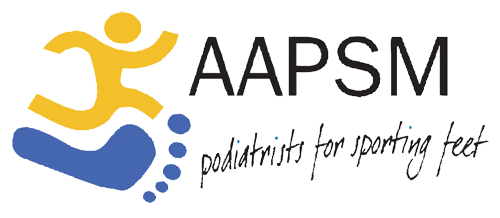Foot strike Pattern; is it one size fits all?
Is heel striking bad? Should I change to a forefoot striking pattern? I always get injured, should I consider changing how my foot lands? There is an enormous amount of information out there today regarding foot strike pattern; hopefully this article will provide some clarity.
What does the research say?
In summary, most of the literature written today basically suggests there is no advantage in regards to injury rate between forefoot, midfoot and rearfoot striking.
Most research suggests that the majority of us are heel strikers, with articles citing 87% (1) and 95% (2) of recreational runners land heel first, whereas around 89% of marathoners are heel strikers.
Studies have also shown little to no difference in injury rate, running economy and efficiency (3,4,5). One study looked at 202 Ultra marathoners. Over the course of the study, half of the participants got injured. Foot strike pattern was deemed not to be an indicative factor. Interestingly, the only related factors were age, being female and having a longer stride length.
From the research we know that during ground contact, in a forefoot striking individual, there is a decrease in patella femoral joint loading (anterior knee), although an increase in ankle loading (6,7); this is the opposite for a rear foot striker. Prior to ground contact, we have also learned that in a forefoot striker, there is increased activity in the calves and decreased activity in the anterior shins during late swing phase. In contrast to this, rear foot strikers exhibit increased activity in the quadriceps and lateral hamstring during late swing phase (8).
It must be noted that most of the evidence available today is of medium level. There have been a couple of studies completed which are of low level evidence suggesting that a forefoot striking pattern reduces the rate of injury. As both were lower level studies, their clinical significance is somewhat irrelevant.
What are the implications for injury?
Force cannot just disappear, but rather be dispersed from one place to another. This principal can be applied in running. Move the force from one tissue, and it will be placed on another tissue. I think from a combination of the research available and clinical experience the following could be assumed, but not assured, about foot strike pattern and certain injuries.
- More common in mid/forefoot strike pattern
Metatarsal stress fractures
Achilles tendon injury
Calf injury
Dorsal midfoot pain
Posterior tibial tendon problems
- Heel strike pattern
Tibial stress fractures
Tibialis anterior injury
- Less common in mid/forefoot
Patellar femoral pain
- Less common in heel strike
Peroneal tendonitis
- Not sure
Medial Tibial Stress Syndrome
Calcaneal stress fractures: Always thought of as a heel striker injury, although has seemingly become more prevalent in mid/forefoot. Perhaps this is not due to the impact force, but rather a pulling force from the achilles tendon?
Plantar heel pain
Foot strike pattern as a treatment tool
As mentioned, most of the research suggests that a forefoot strike pattern will lead to a decrease in anterior knee loading, and an increase to ankle loading. With this in mind it may make sense for a runner that is experiencing anterior knee pain, to very slowly and carefully transition to a midfoot or forefoot landing pattern. Research has also shown that reducing stride length by 10% can also be effective in reducing knee joint loads (9). Perhaps a combination of the two would be most effective in reducing knee loads? Having said that, the risk of developing ankle and forefoot issues must be considered, as a change in gait will lead to an increased load elsewhere.
What about a patient with an achilles tendinopathy? The opposite could be said for this patient, where a heel strike landing pattern might be most appropriate, as ankle loading is less in a heel striker. Delving further into the idea of loading, our current knowledge on tendinopathy is that they respond best to calculated and gradually increasing loads. In the case of an achilles tendinopathy, a heavy isometric calf raise strength program might be appropriate. Going by this thought process could we potentially gain the same results in a tightly monitored situation where someone transitions to a forefoot striking pattern, slowly and gradually increasing achilles loading.
I think that the take home message should be that not one size fits all. All of this is just food for thought, as there are not many concrete answers on the subject. All things must be weighed up with an appropriate health professional before making a decision. From a rehab perspective, the aim is to transfer from one tissue to another. With a sound knowledge of functional anatomy and running mechanics, we can make small and calculated alterations to gait to achieve a reduction in stress in a certain tissue.
I’ll leave you with this image from the Men’s 10km trials for the 2012 London Olympics. The image depicts the foot strike pattern of the participants who are among the most elite runners in the world. This perhaps tells us that the best way for your foot to land is however you please
Nelson Pollard
Podiatrist
Gold Coast Foot Centres
References
Characterization of Foot-Strike Patterns: Lack of an Association With Injuries or Performance in Soldiers: MAJ Bradley J. Warr; Rebecca E. Fellin; Shane G. Sauer; LTC Donald L. Goss; Peter N. Frykman; Joseph F. Seay
Is the rearfoot pattern the most frequently foot strike pattern among recreational shod distance runners? Matheus Oliveira de Almeida, Bruno Tirotti Saragiotto, Tiê Parma Yamato, Alexandre Dias Lopes
Is changing footstrike pattern beneficial to runner: Joseph Hamill and Allison H. Gruber
Foot strike pattern and injuries in Ultramarathoners
Characterization of Foot-Strike Patterns: Lack of an Association With Injuries or Performance in Soldiers: MAJ Bradley J. Warr; Rebecca E. Fellin; Shane G. Sauer; LTC Donald L. Goss; Peter N. Frykman; Joseph F. Seay
Patellofemoral Joint Stress during Running with Alterations in Foot Strike Pattern. Nathan Vannatta, C.; Kernozek, Thomas W.
Forefoot strikers exhibit lower running-induced knee loading than rearfoot strikers Kulmala, Juha-Pekka; Avela, Janne; Pasanen, Kati; Parkkari, Jari
Differences in Muscle Activity between Natural Forefoot and Rearfoot Strikers during Running Jennifer R. Yong, Amy Silder, Scott L. Delp
The influence of minimalist footwear and stride length reduction on lower-extremity running mechanics and cumulative loading Colin R. Firminger, Brent W. Edwards





